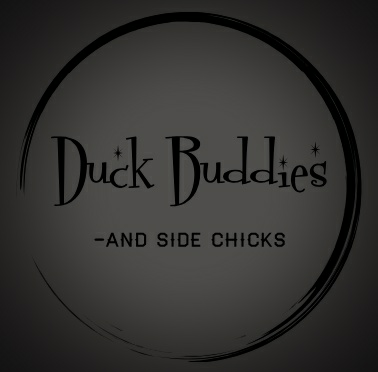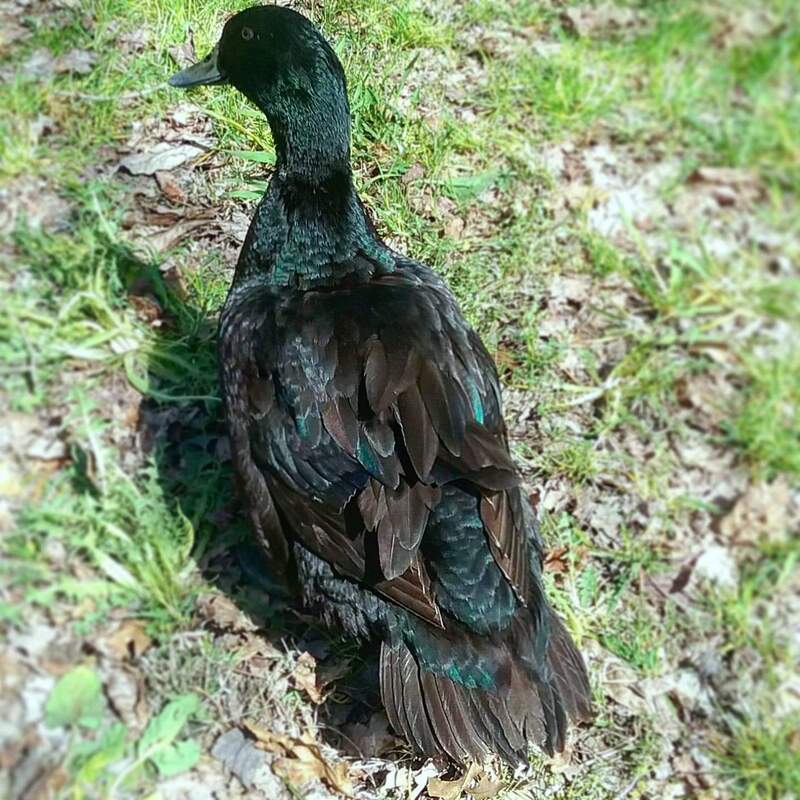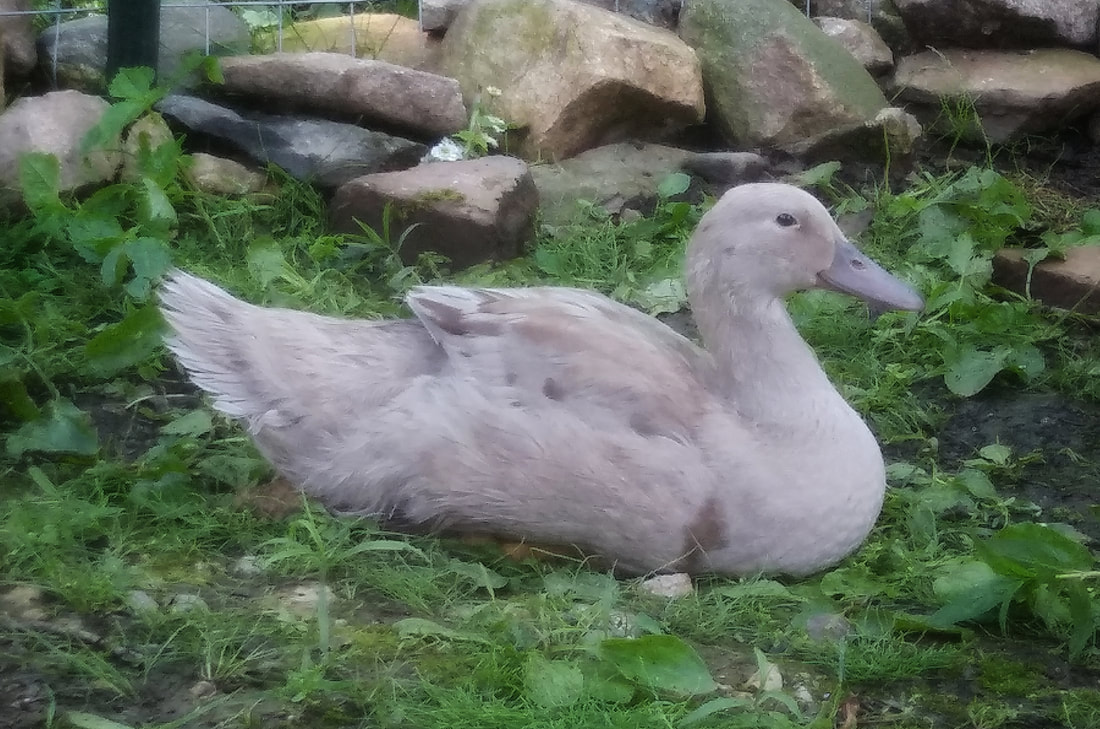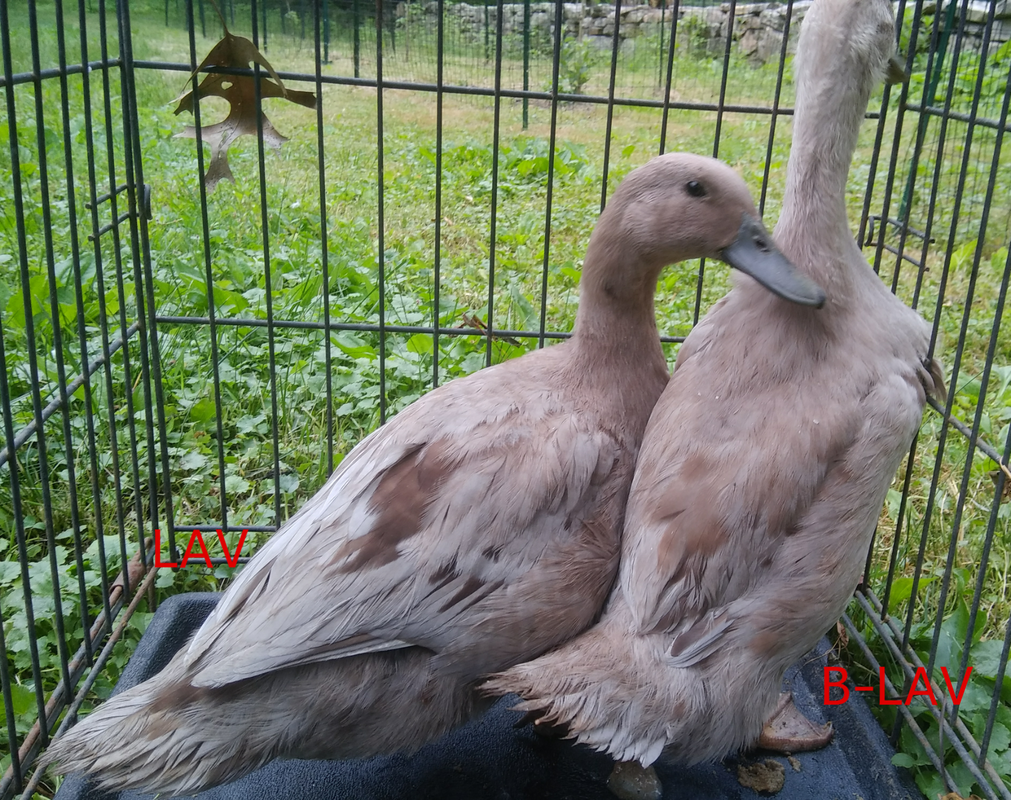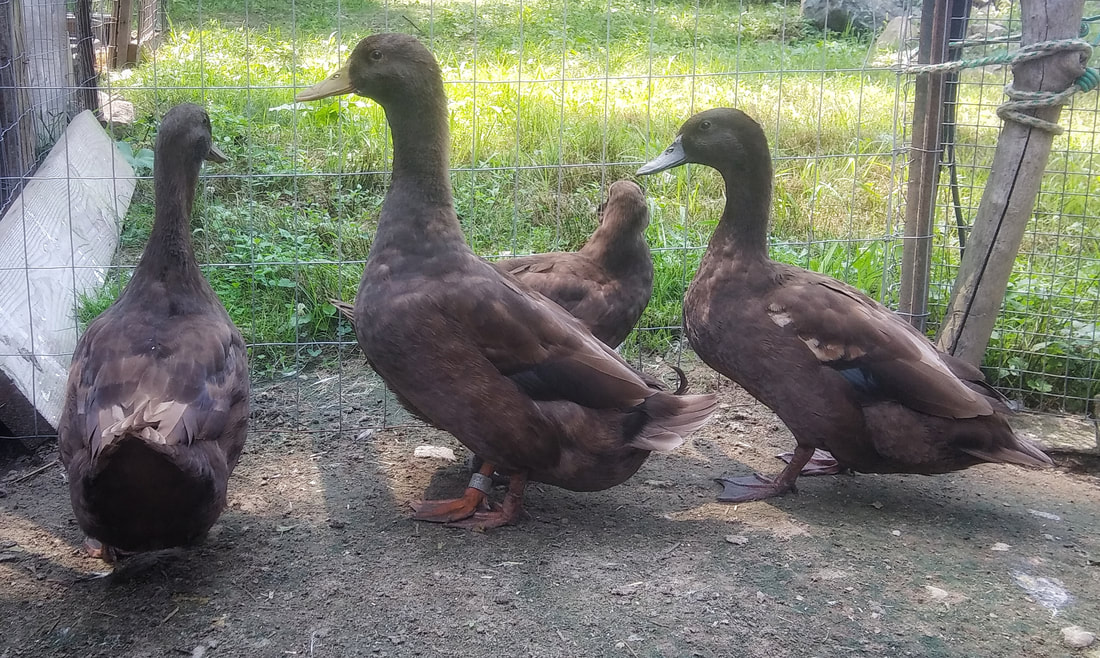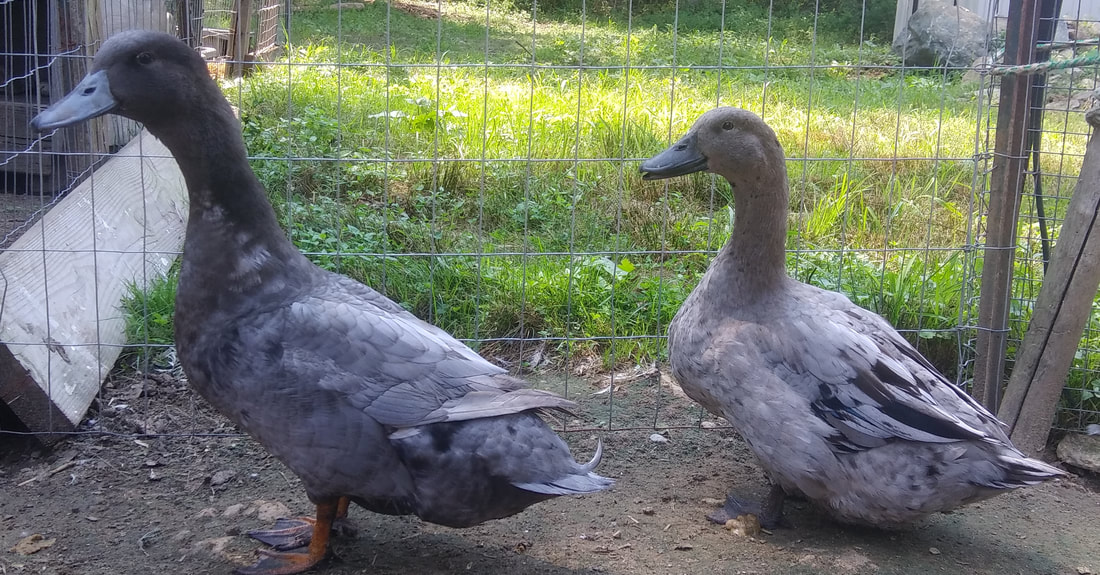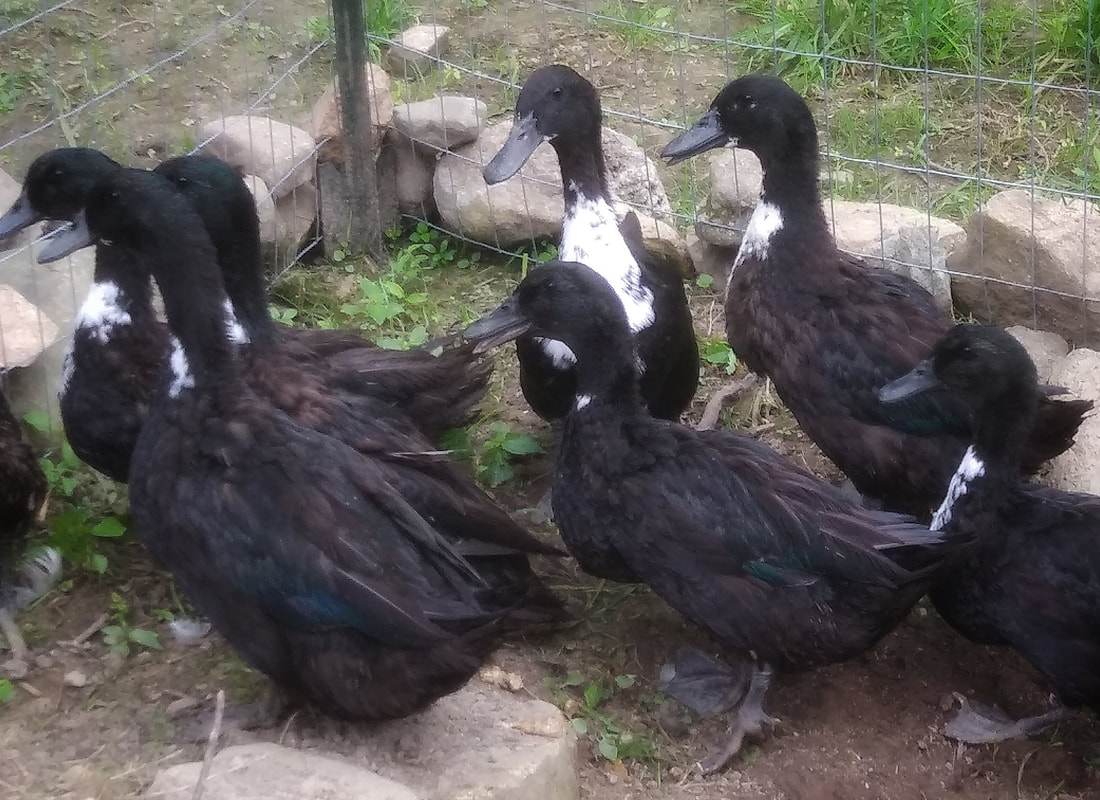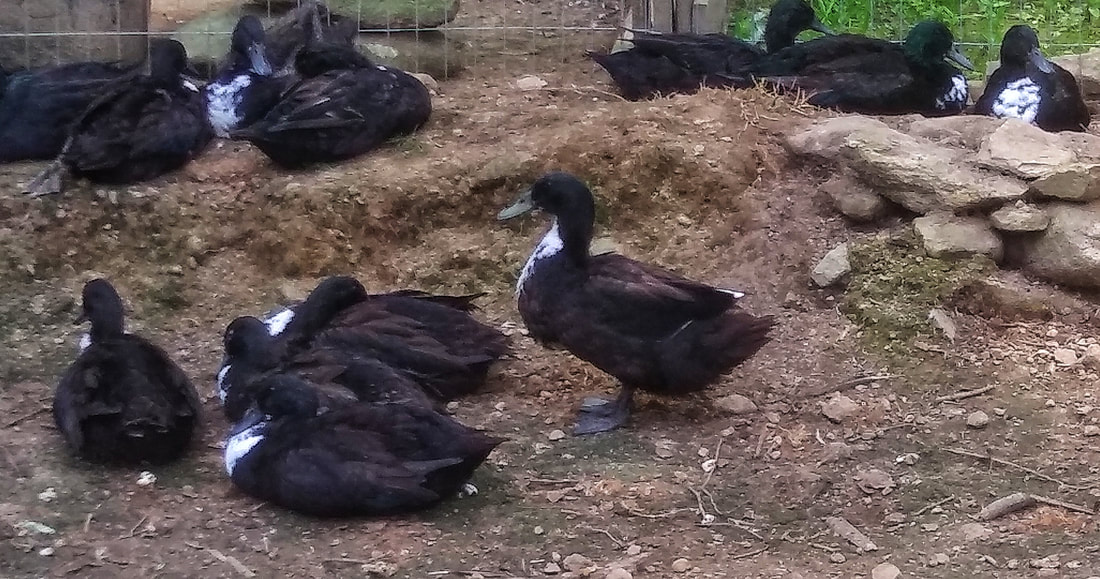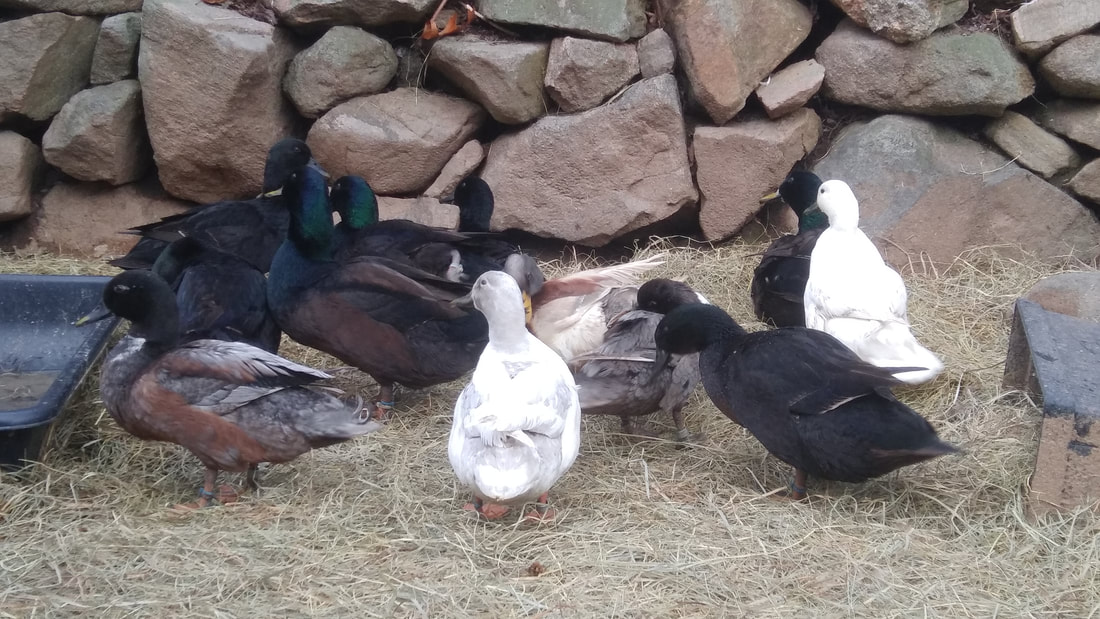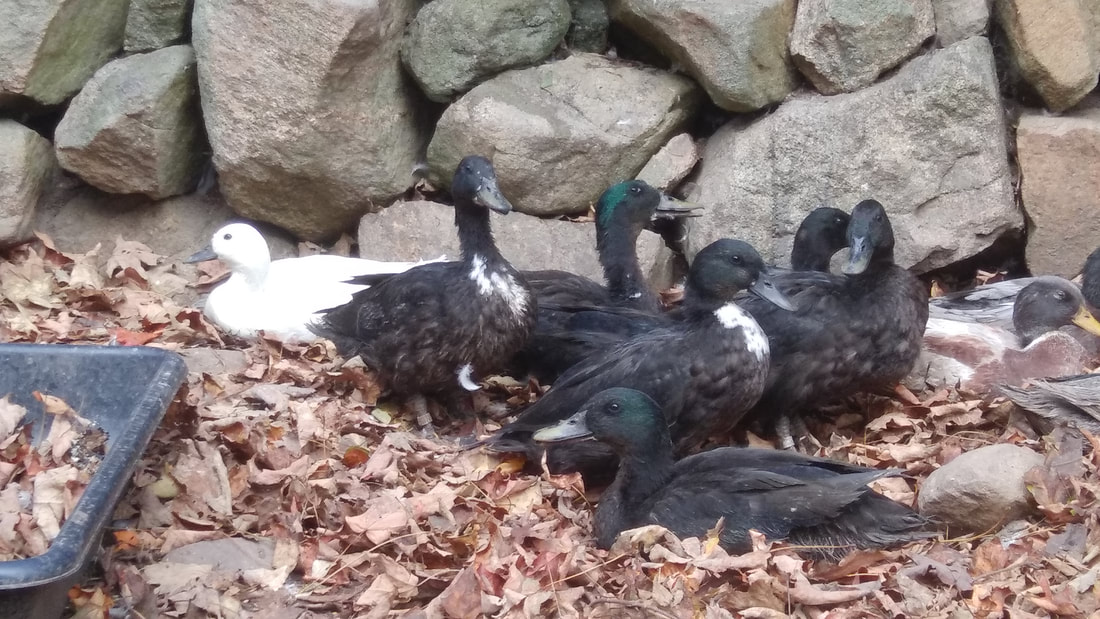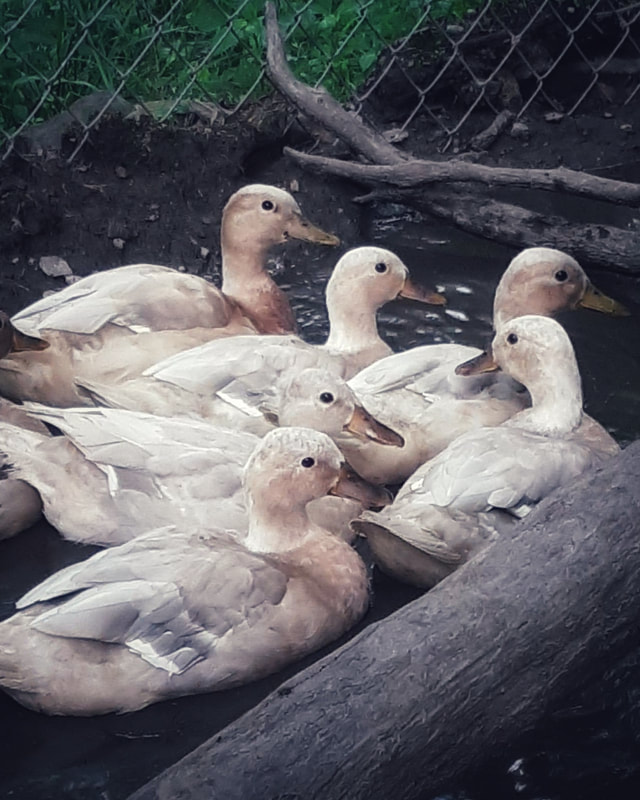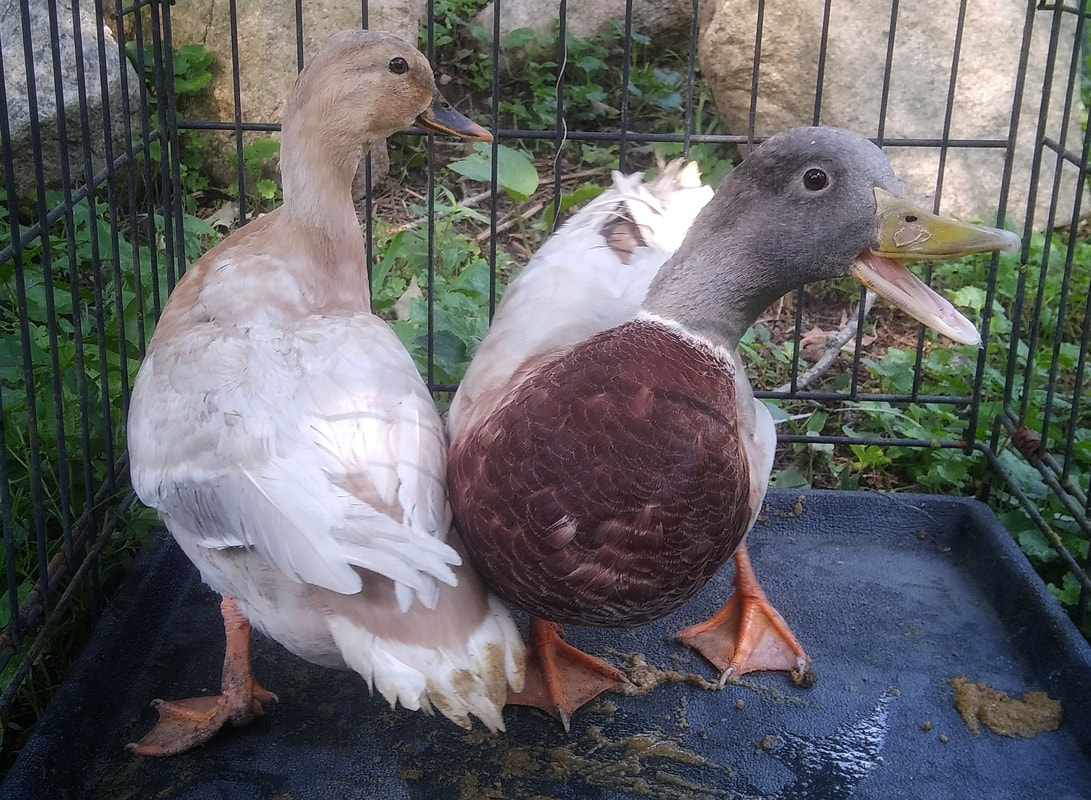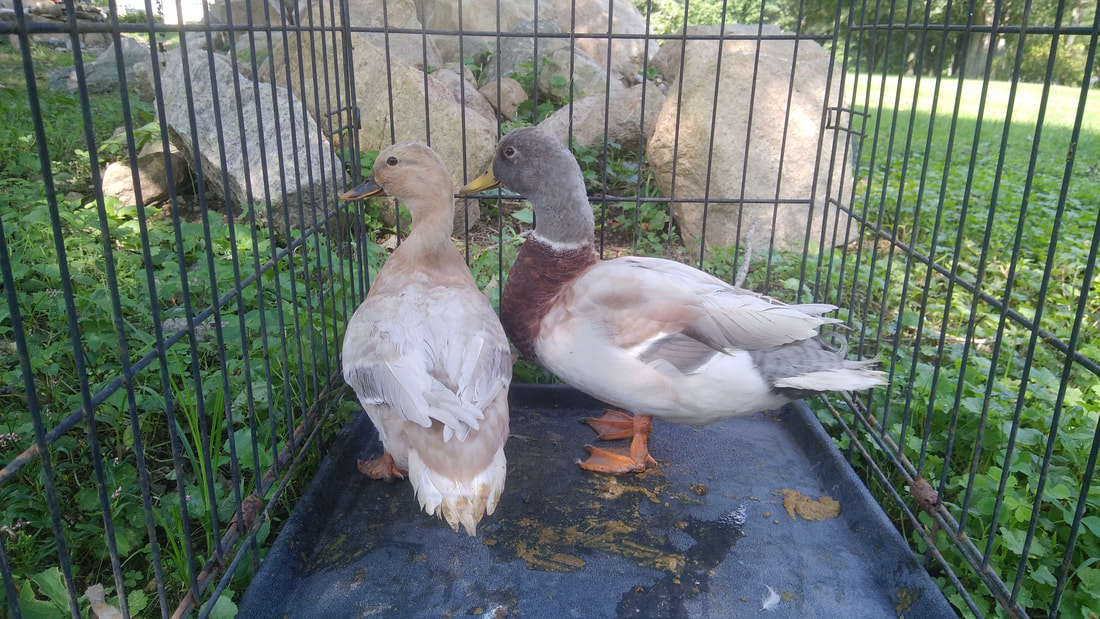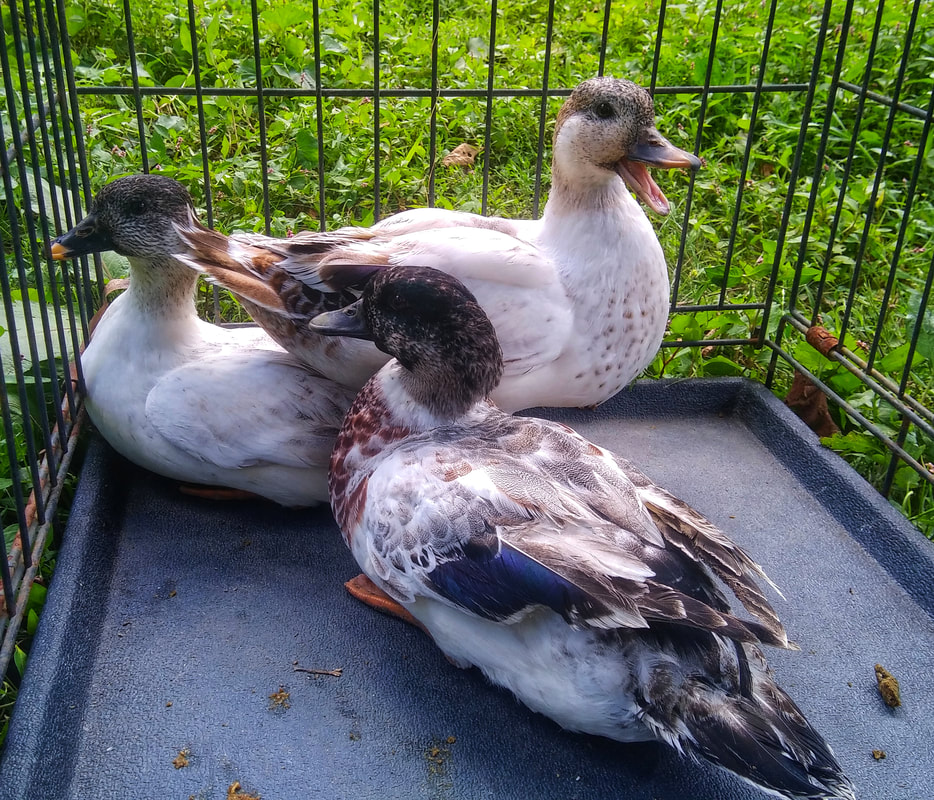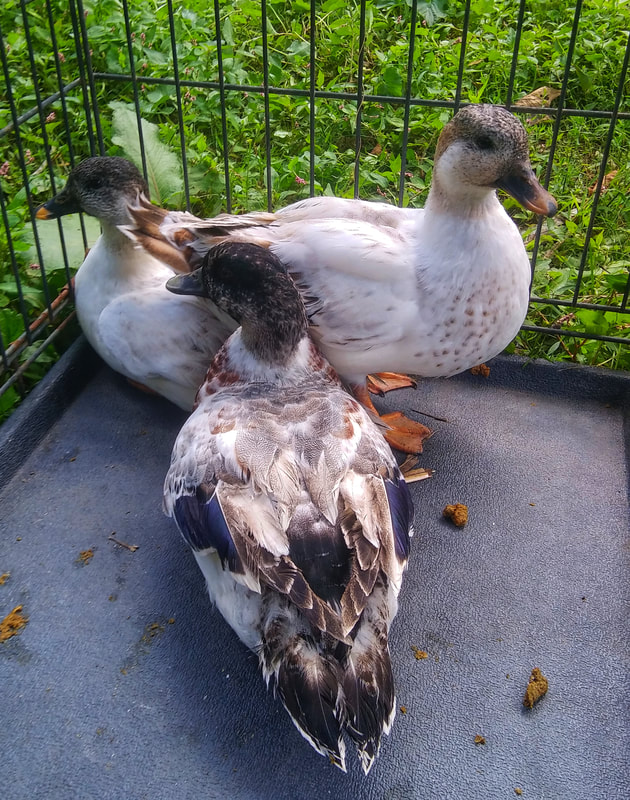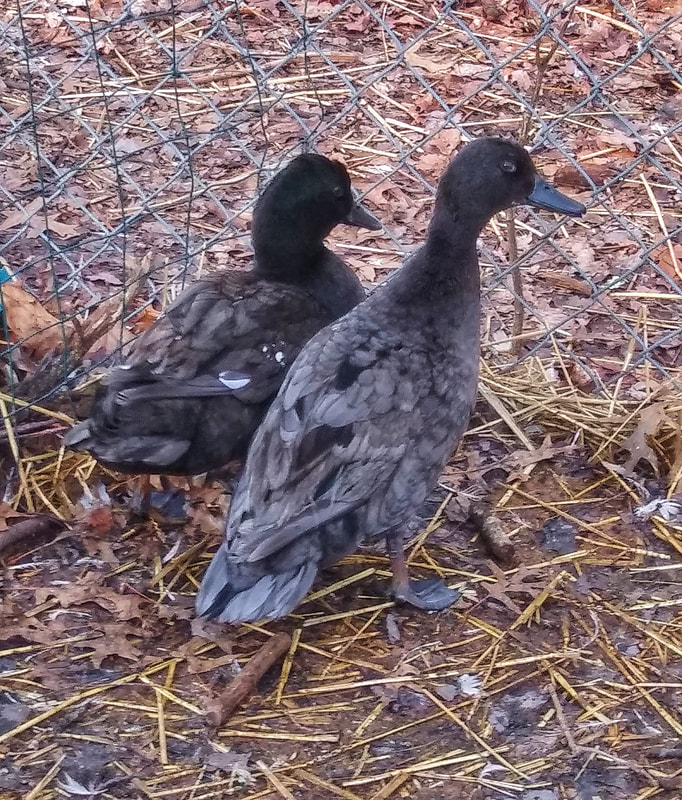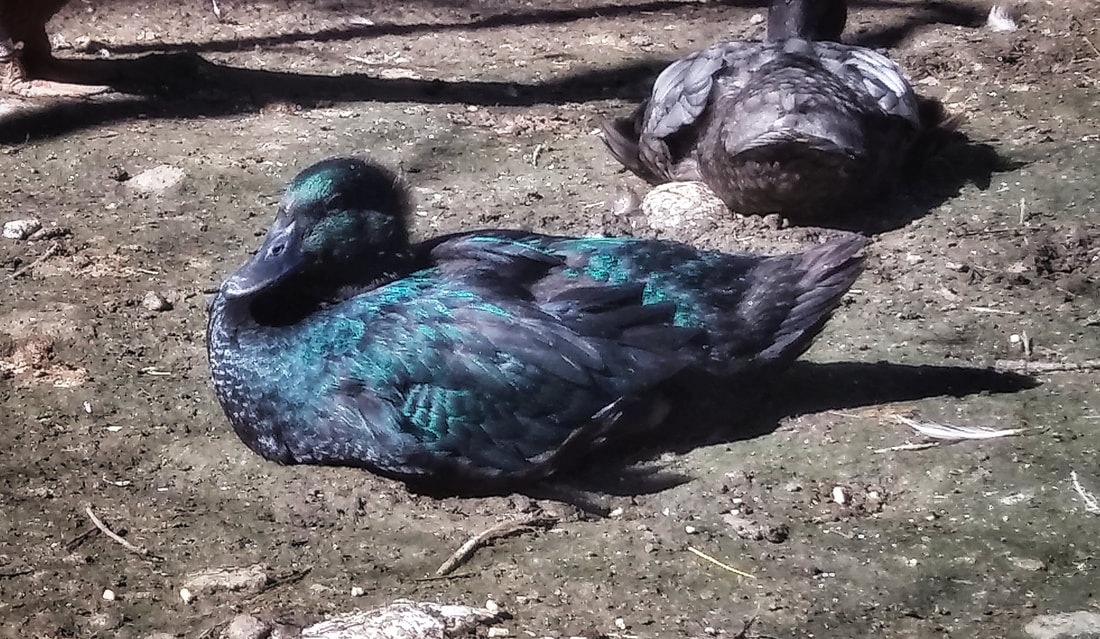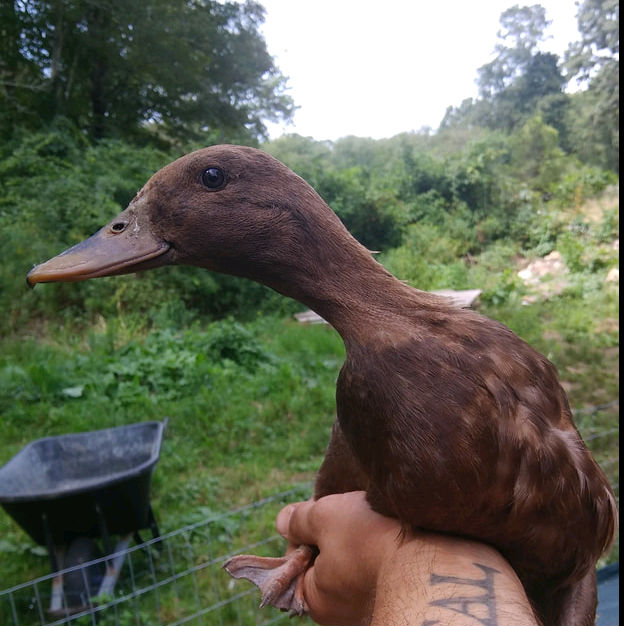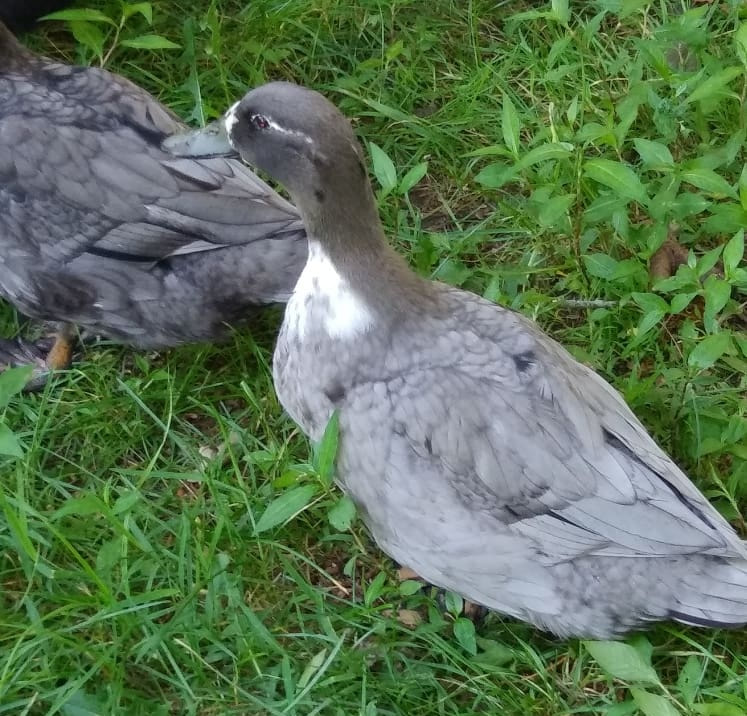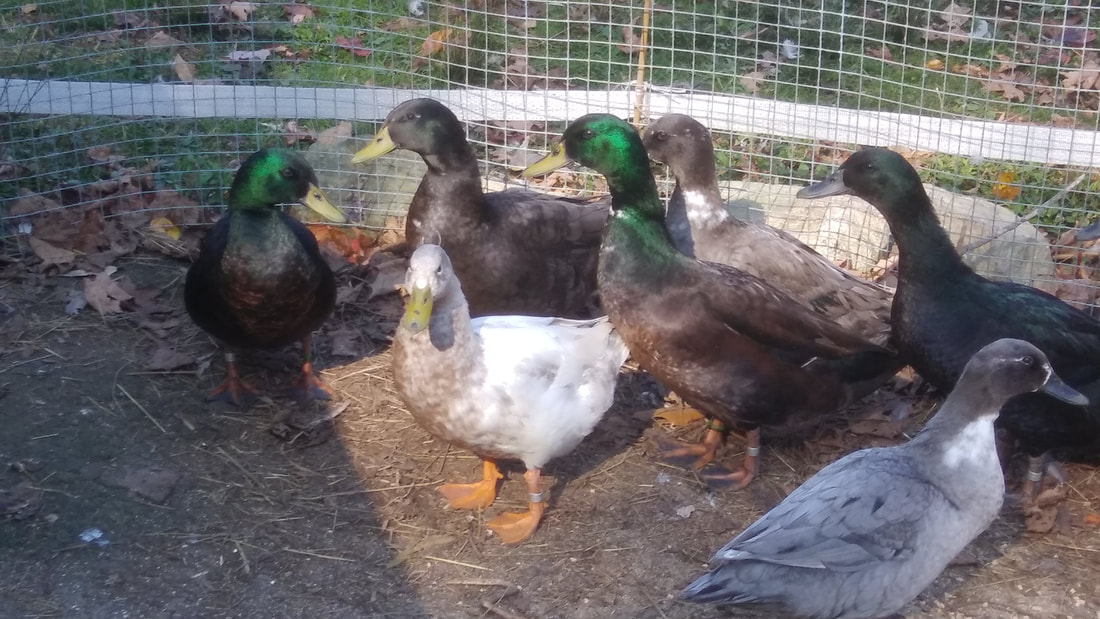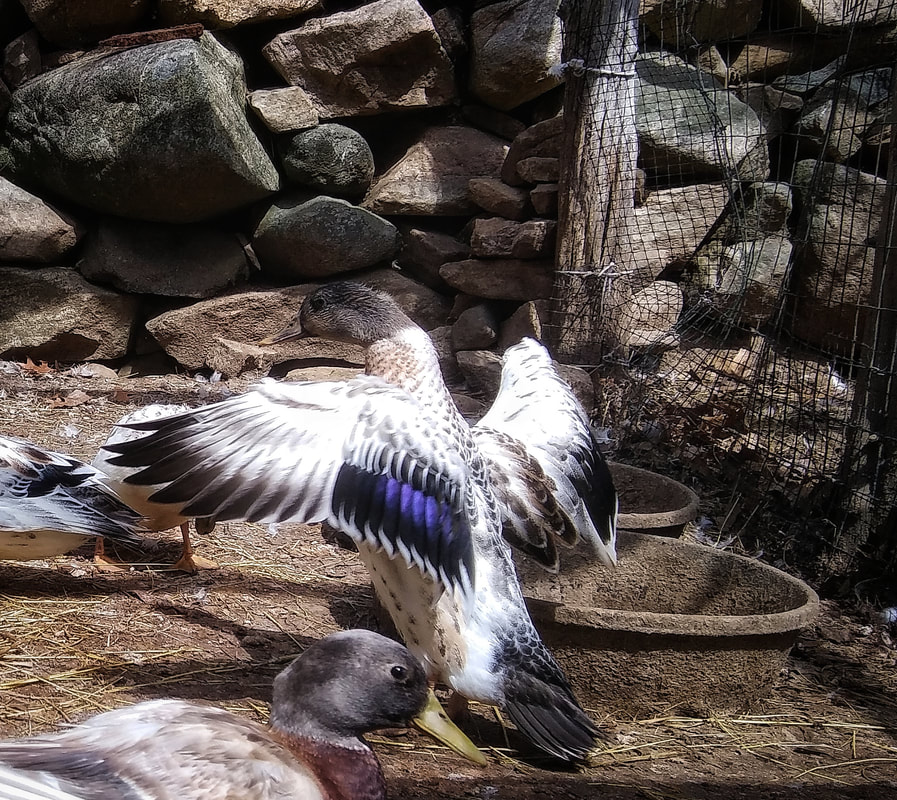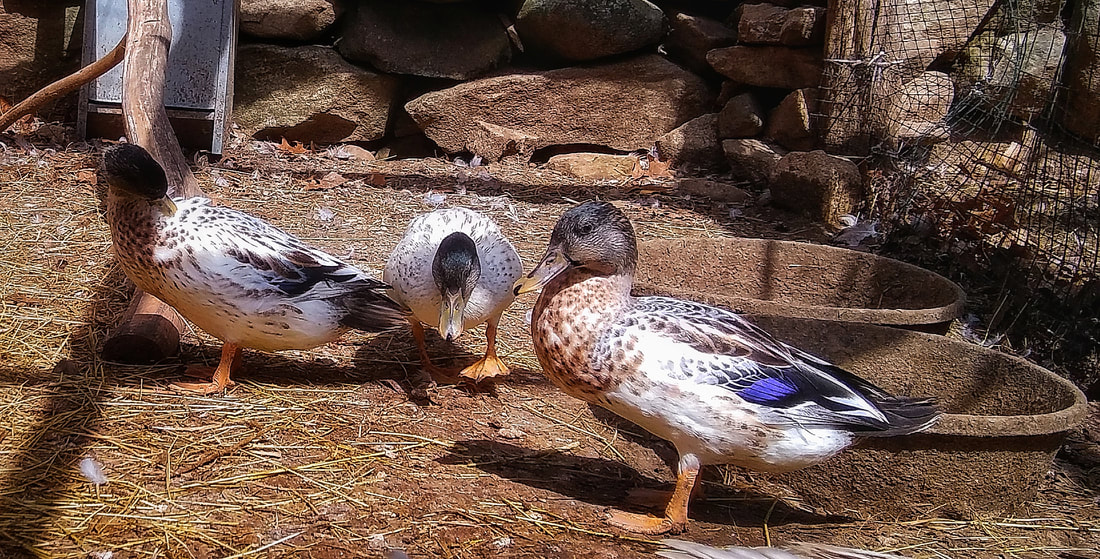Cayuga
The Cayuga is a medium-sized breed of duck originating in New York. Aside from their beautiful plumage; they are known for being hardy, mild mannered, observant and productive. Historically they were raised for meat and are said to be exquisite in taste. These ducks are a great all-purpose breed, as pets they do an amazing job at both foraging for pests and interacting with people they are familiar with. Having a strong maternal drive allows the females to successfully raise large broods. Originally Cayugas were only black, but more recently available in all of the "Self" colors. We raise them Black, Blue, Silver, Chocolate, Lavender and Lilac. The Lavender and Lilac Cayugas were developed here at Duck Buddies and Side Chicks by Craig Bordeleau. 2021 being the first year they've been made available to the public.
The Blue and Silver Cayugas show a sort of sexual dimorphism. The females are a few shades lighter than the males. This is especially true in the Silvers- the males are a muted grey color while the females appear white. Identifying sex visually at a younger age is possible, but this is not always the case with the Blues.
The Chocolate Cayugas come in two forms- Dark and Milk Chocolate. The Dark Chocolate is the standard brown sex-linked dilution of black seen in other breeds such as Chocolate Runner Ducks. Milk Chocolate is the much rarer buff sex-linked dilution, it's a lighter version of the brown. The difference in shade is much more noticeable when in nuptual plumage. Both forms can be used to produce sex-linked offspring by pairing a Chocolate male to a non-chocolate female. This will produce all Chocolate female and all non-chocolate male offspring. A Milk Chocolate male bred to a Dark Chocolate female will produce all Milk Chocolate females and all Dark Chocolate males. This phenomenon is especially useful for sexing ducklings at hatch without the need for vent sexing. It is a 100% accurate method.
The Blue and Silver Cayugas show a sort of sexual dimorphism. The females are a few shades lighter than the males. This is especially true in the Silvers- the males are a muted grey color while the females appear white. Identifying sex visually at a younger age is possible, but this is not always the case with the Blues.
The Chocolate Cayugas come in two forms- Dark and Milk Chocolate. The Dark Chocolate is the standard brown sex-linked dilution of black seen in other breeds such as Chocolate Runner Ducks. Milk Chocolate is the much rarer buff sex-linked dilution, it's a lighter version of the brown. The difference in shade is much more noticeable when in nuptual plumage. Both forms can be used to produce sex-linked offspring by pairing a Chocolate male to a non-chocolate female. This will produce all Chocolate female and all non-chocolate male offspring. A Milk Chocolate male bred to a Dark Chocolate female will produce all Milk Chocolate females and all Dark Chocolate males. This phenomenon is especially useful for sexing ducklings at hatch without the need for vent sexing. It is a 100% accurate method.
Shetland Ducks
Shetland Ducks are a very rare breed hailing from Scotland. Globally, they are critically endangered. More recently they were imported to the United States by Cabbage Hill Farm and have been steadily growing in numbers. Originally they are thought to have been brought to the British Isles by the Vikings where they continued to develop into what they are today. Possible ancestry includes the Pomeranian or Swedish Ducks.
Being a light breed, they fall between Cayuga and Mallards in size. Having somewhat loose feathering gives them a unique appearance when compared to similarly colored breeds. They hold themselves in a semi-upright position which gives prominence to their noticeable breast. The color is black with a white bib. The bibs are somewhat spotty- especially compared to Swedish Ducks. Black bills and feet are standard, but like with all other extended black ducks the males are a bit lighter in this department. Drake bills are more of an olive green. Another indicator of sex is that the drakes have an iridescent green head while females are black. The breed is affected by aged white, turning them almost fully white in their old age. Given ducks of this breed have been known to live into their 20's- you can expect little black to remain. Of course, like other self colored breeds, the females show their age much faster than the males.
Shetland Ducks are a generally quiet breed. They don't seem overly concerned with what is happening around them- which makes them less jumpy or nervous. They are also quite hardy and notorious foragers. Not a surprising description for a breed hailing from the famed Shetland area. These ducks are certainly pleasant to be around with the laid back nature they posses.
Being a light breed, they fall between Cayuga and Mallards in size. Having somewhat loose feathering gives them a unique appearance when compared to similarly colored breeds. They hold themselves in a semi-upright position which gives prominence to their noticeable breast. The color is black with a white bib. The bibs are somewhat spotty- especially compared to Swedish Ducks. Black bills and feet are standard, but like with all other extended black ducks the males are a bit lighter in this department. Drake bills are more of an olive green. Another indicator of sex is that the drakes have an iridescent green head while females are black. The breed is affected by aged white, turning them almost fully white in their old age. Given ducks of this breed have been known to live into their 20's- you can expect little black to remain. Of course, like other self colored breeds, the females show their age much faster than the males.
Shetland Ducks are a generally quiet breed. They don't seem overly concerned with what is happening around them- which makes them less jumpy or nervous. They are also quite hardy and notorious foragers. Not a surprising description for a breed hailing from the famed Shetland area. These ducks are certainly pleasant to be around with the laid back nature they posses.
Silkie Ducks
These bantam ducks have an unusual feature when Homozygous for the Silkie gene. It causes feathers to be longer, lighter and lacking the hook-like barbicels normal feathers have. Barbicels are part of a velcro-like system in conjunction with barbs and barbules that allows the feathers to stick together, creating a smooth surface. Fully Silkied ducks are still capable of flight- over short distances. Although the smooth Heterozygous birds of the breed can fly quite well- they don't prefer to. If allowed to free range with the ability to fly they will stay close with little desire to spend much time away from home. Compared to the most common bantam- the Call Duck- they are quiet, only making noise if given a reason. In size Silkies are a bit smaller than Mallards. The mutation that causes their unique feathering also causes the shell and outer membrane of their eggs to be thicker. Hatching does not come easy to Homozygous birds. Which is why it is necessary to retain Heterozygous birds in the breed- they don't share that issue.
Aztec Ducks
These personable little guys have an interesting story. Dave Holderread created this breed in the the 1980's in order to have a bantam breed of duck smaller than a Mallard and much easier to raise and hatch than Call Ducks. He was successful in his attempt, creating his exotic looking Aztec Ducks. The name was chosen from their reminding the Holderread's of the look of beautiful Aztec-styled rugs they had seen during their travels. At the time there were only 3 bantam breeds readily available to the public- Calls, Mallards and Black East Indies. None of which occurred in the Porcelain or Blue Pearl (now known as Blue Fawn/Blue Mallard) colors that the Aztecs did. In fact, Dave commented that at that point in time- he had never seen either color.
Efforts have been underway to increase the genetic variabilty within the breed while simultaneously correcting a few small imperfections in type. But as Dave both retained and made available his original breed standards- this has been a fairly simple task. The birds originally purchased were all of the Porcelain color. As of yet, the Blue Pearl color has not been perfected. The 2020 hatching season should see that accomplished.
Efforts have been underway to increase the genetic variabilty within the breed while simultaneously correcting a few small imperfections in type. But as Dave both retained and made available his original breed standards- this has been a fairly simple task. The birds originally purchased were all of the Porcelain color. As of yet, the Blue Pearl color has not been perfected. The 2020 hatching season should see that accomplished.
Miniature Silver Appleyard
Miniature Silver Appleyard Ducks are a beautifully small breed of duck. They are about 1/3 the weight of the much larger standard Silver Appleyard. This original breed was developed by Reginald Appleyard in the 1940's and in the 1980's Tom Bartlett was able to miniaturize them at Folly Farm in England. Their adult weight ranges from 30-35 ounces, making for a small bird. In size they fall between Call and Australian Spotted Ducks. The body type much closer resembles Calls than standard Silver Appleyards with their dwarfed features. In color the miniature and standard versions are identical.
Known to be one of the hardiest bantam duck breeds, Miniature Silver Appleyards are much easier to hatch, breed and maintain than Call Ducks. They also make for good surrogates when hatching the eggs of other bantam breeds. In temperament they land amongst the less shy breeds and are known to accept treats from the hand. They will also not hesitate to remind you of feeding time if you happen to be a little later than usual. Having such a tiny voice makes getting reprimanded by a hungry duck more enjoyable than annoying, luckily.
Known to be one of the hardiest bantam duck breeds, Miniature Silver Appleyards are much easier to hatch, breed and maintain than Call Ducks. They also make for good surrogates when hatching the eggs of other bantam breeds. In temperament they land amongst the less shy breeds and are known to accept treats from the hand. They will also not hesitate to remind you of feeding time if you happen to be a little later than usual. Having such a tiny voice makes getting reprimanded by a hungry duck more enjoyable than annoying, luckily.
East Indies Ducks
The East Indies Duck is another bantam with a misleading name, as they were developed in the U.S.A. in the 19th century. They have been accurately described as a tiny and more striking version of the Cayuga. The iridescent green 'beetling' is much more pronounced in the Indies Ducks. There are no photos that capture the visual appeal radiating from these ducks- especially when viewed on a sunny day. In size Indies are slightly larger than Calls and much more streamlined. They don't share the dwarfed features of calls, such as overly-short beaks and puffier cheeks. These differing features equate to the Indies being more easily hatched, as well as generally more vigorous and hardy. Like the Cayuga, the eggs laid at the beginning of the season have a black coating deposited on them as they are laid. The coating gets progressively fainter as the season continues.
Historically, they've been known by many names. The most common in the U.S.A. being the Black East Indies. More recently they've become available in Blue, Silver and Chocolate colors as well. We are currently working on developing Lavender and Lilac versions using the highest quality Blue East Indies available.
Historically, they've been known by many names. The most common in the U.S.A. being the Black East Indies. More recently they've become available in Blue, Silver and Chocolate colors as well. We are currently working on developing Lavender and Lilac versions using the highest quality Blue East Indies available.
Pachaug Forest Ducks
These are my ducks. I developed them as a breed showcasing my favorite aesthetic and breed traits. In size PFDs are slightly smaller than Wild Mallards, with more robust necks and fairly horizontal stance. The base stock used in the making of them included my most pleasant Cayuga girls. In temperament they are very similar to the standard Cayuga- observant, motivated foragers, highly capable mothers and protective. Development is fast- fully capable of laying, nesting and hatching eggs, as well as successfully raising their brood- only 5 months after hatching.
PFDs are available in Black, Blue and Silver. They carry the Rust gene. It causes a Cinnamon overtone in Blue birds that covers the White Bib as they mature. As they age, the color spreads over the rest of the body. But- it seems to only affect one side of any given feather, and to varying degrees. Sunlight enhances the effect significantly. In Black ducks it behaves a little differently. Rather than Cinnamon, a deep Chestnut color covers the breast. Dependant on the lighting they can occasionally appear Chocolate. They have the iridescent 'beetling' similar to BEIs and Cayuga, but more often than Green it appears Purple or Blue. This is especially true for the females. The effects of the Rust seem more pronounced in their sex. Some birds develop pencilled Dark Brown and Black Primary Feathers, and fewer develop the same color/pattern on the outermost few feathers on either side of the tail.
Females are a few shades lighter than the Blue drakes. They also have a visible white eye ring extending as a line toward the back of the head. A White Outline should be present around the female's beak. Both sexes have Blue beaks, feet and legs. Drakes have lighter bills.
PFDs are available in Black, Blue and Silver. They carry the Rust gene. It causes a Cinnamon overtone in Blue birds that covers the White Bib as they mature. As they age, the color spreads over the rest of the body. But- it seems to only affect one side of any given feather, and to varying degrees. Sunlight enhances the effect significantly. In Black ducks it behaves a little differently. Rather than Cinnamon, a deep Chestnut color covers the breast. Dependant on the lighting they can occasionally appear Chocolate. They have the iridescent 'beetling' similar to BEIs and Cayuga, but more often than Green it appears Purple or Blue. This is especially true for the females. The effects of the Rust seem more pronounced in their sex. Some birds develop pencilled Dark Brown and Black Primary Feathers, and fewer develop the same color/pattern on the outermost few feathers on either side of the tail.
Females are a few shades lighter than the Blue drakes. They also have a visible white eye ring extending as a line toward the back of the head. A White Outline should be present around the female's beak. Both sexes have Blue beaks, feet and legs. Drakes have lighter bills.
Snowy Mallards
Snowy Mallards are a gorgeous variant of the standard Grey (wild patterned) Mallard. They carry two doses of the harlequin gene. This gene causes the birds who carry it in homozygous form to be lighter than birds who display the lightening gene, and much lighter than those who display neither. It also enlarges the wing speculum, darkens tail feathers and in males extends the claret onto the shoulders and more often includes a neck ring. The gene is recessive so first generation crosses to birds who do not carry it will produce carriers who do not display it. The effects of the harlequin gene can be seen in Welsh Harlequin and Overberg Ducks.
Being that they are merely Mallards with a different color; the body type, size, temperament and hardiness are the same. A very easy breed to raise. Also a breeze to hatch compared to some other bantam ducks. Mallards are the largest of the bantams. Their abilities to fly, forage and produce offspring are among the best- making them a perfect duck for the backyard.
Being that they are merely Mallards with a different color; the body type, size, temperament and hardiness are the same. A very easy breed to raise. Also a breeze to hatch compared to some other bantam ducks. Mallards are the largest of the bantams. Their abilities to fly, forage and produce offspring are among the best- making them a perfect duck for the backyard.
